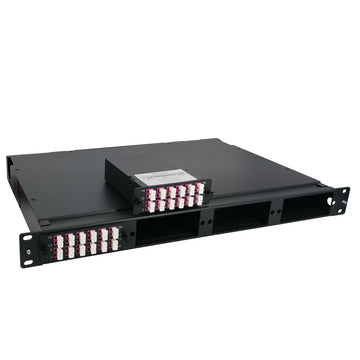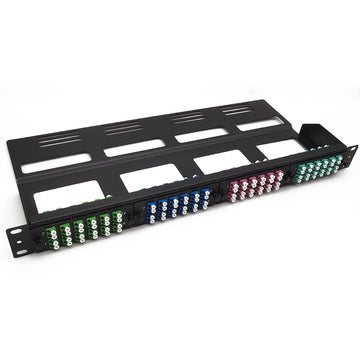VLAN vs Subnet: What Are Their Differences?
When it comes to networks and their strengths, a large number of people are often confused about the two terms VLANs and Subnet. VLAN and Subnet are both developed to deal with segmenting or partitioning a portion of the network. And they also share such similarities as restricting broadcast domains or ensuring security through isolation of different sub-networks. However, there are obvious differences between them on operation, functionality and deeper objectives. This post will focus on VLAN vs Subnet: what’s the difference?

What is VLAN?
VLAN, also known as virtual LAN, is a group of devices on one or more LANs regardless of physical location. That is to say, it allows devices to be grouped together even though they are not connected on the same fiber switch. The connection is not a physical one, but a virtual one meaning no wires are connecting two or more switches, but the switch is itself physically and logically by gates, and hence the network gets the name virtual local area network.
However, VLAN networks are flexible and show less traffic congestion as efficient segmentation of traffic takes place at the switch. It is secure and has a larger range of networks, and supports many devices at once. Hence VLAN networks are preferred in areas needing connectivity for a large number of devices like offices and enterprises.
What is Subnet?
Sub networking or subnetworks are a small group of IP or Internet Protocol addresses connected to establish a network between the devices that are defined by the same subnet mask. Any IP address within the same Subnet can communicate with each other without using routing devices. To be clear, we can think Subnet as the department of a company, people in the same department can talk freely without going out of their department. If you want to reach an address outside of your Subnet, you will have to go through a router or modern Gigabit Ethernet switch with router functionality.
A Subnet essentially workspace a physical network into many parts accessible to the user. The network is determined by the IP address of the user and the switch. The Subnet network works at the interface layer, which means the L3 layer. This means it can connect to VLANs outside the physical network as well. This is the main difference between a VLAN and a Subnet.
VLAN vs Subnet: What’s the Difference?
At a high level, subnets and VLANs are analogous in that they both deal with segmenting or partitioning a portion of the network. However, VLAN and Subnet are totally different things in a close look. The following chart lists the differences between VLAN and Subnet in details:
| Parameter | VLAN | Subnet |
| Definition | VLAN is a logical LAN that contains broadcasts within itself, and only hosts belonged to that VLAN will see those broadcasts. | Subnet is an IP address range of IP addresses that help hosts communicate over layer 3. |
| Logical and Physical Network | VLAN allows us to create different logical and physical networks. | Subnet allows us to create logical networks through the same physical network. |
| Network Member Control | A VLAN is configured at server/router side. The one who controls the router/server decides which computer/port is assigned to which VLAN. For example, if you have a 24 port 10GbE switch, you can assign 12 ports to VLAN 1 and the others to VLAN 2. | A Subnet is determined by the IP you use and the IP can be chosen by the admin of a computer (or device). Therefore it is done on the client side – you can not control it. |
| OSI Layer | VLAN is a layer 2 term where MAC addresses work. | Subnet is a layer 3 term where IP layer works. |
| Hardware/Software Based | More of software-based terminology. | More of hardware-based terminology. |
| Security & Control | VLANs perceived to be more secure and provide more robust control for the network. | Subnet has limited control in comparison to VLAN. |
| Major Benefit | VLAN is extremely flexible, it brings better work performance, less traffic, and more efficiency. | A Subnet will not be affected when other Subnets going down or having technical breakdowns. |
The main difference between VLAN and Subnet is that they differ in their broadcast domain layer. VLANs Or virtual local area network has broadcast domains at the L2 level while Subnets have different broadcast domains. Subnets have broadcast domains in the L3 layer, and hence this is where VLANs and Subnets differ.
Conclusion
VLAN and Subnet both have their advantages and limits. The choice of VLAN of Subnet as the network domain in your workplace depends on the type of works and the duty of work. Also, in the case of enterprises with various departments, VLAN networks are good at securely portioning the network for less traffic and easier use. For example, VLAN allows for the creation of different logical and physical networks while Subnet only allows for the creation of different logical networks. However, if a network sniffer is employed, users from one Subnet can discover the existence of other Subnets, this will not happen to users of different VLANs. So VLAN vs Subnet: which do you prefer?












